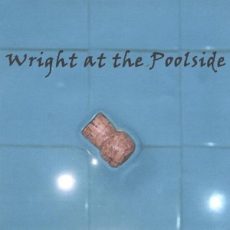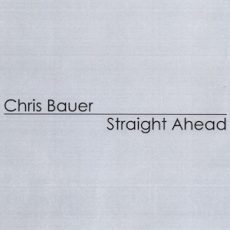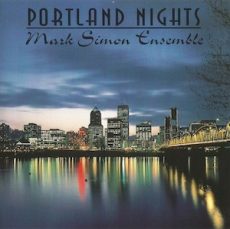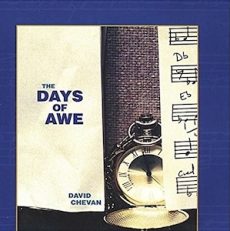
Daily Dose Of Jazz…
George Letellier was born October 11, 1957 in the United States. After attending Berklee College of Music in Boston, Massachusetts in 1975, the following year he wrote his first compositions and arrangements. He began as a pianist playing in warm-up bands for artists such as Phil Woods, Gary Burton, and Steve Swallow. Returning to Berklee in 1983, he graduated two years later with a Superior Prix in Film Music Composition.
Moving to San Francisco, California he worked as a freelance pianist in the jazz and salsa genre from 1986 until 1990. His successful session work attracted film executives and he was hired to compose music for films and corporate videos. In 1987 George served as a music editor on the Academy Award-nominated short film Liru, and in 1988 in Oakland, California, established a film production company where he worked not only as a composer but a producer.
In 1991, Letellier moved to Portugal, accepting a job offer as a professor of composition in Porto, Portugal. There he composed two ballets and was a session musician. He collaborated with saxophonist Mario Santos and formed the George Letellier Quartet which toured all across Portugal.
By 1995 he relocated to Luxembourg and began working as a music composer, session musician and taught private lessons. With the Opus 78 Big Band, he collaborated in arranging the tunes of Frank Sinatra and turning them into large philharmonic ensembles for performing.
From 1997 until 2003, he went into education serving as Director of Jazz Studies at the Esch Conservatoire, wrote three publications on jazz theory and formed the original Consabora Salsa Orchestra with Harri Jokiharra. Since 2001, Letellier has taught jazz at L’Ecole de Musique in Echternach, Luxembourg.
Pianist, composer, and educator George Letellier continues to function as a session pianist, and has performed in hundreds of jazz concerts and theatrical productions in Luxembourg, the United States, Europe, and India.
More Posts: bandleader,composer,educator,history,instrumental,jazz,music,piano

Daily Dose Of Jazz…
Anthony K. Wright was born October 9, 1959 in London, England and began playing brass at school, before moving to clarinet at the age of 12, and later picked up the tenor saxophone. Turning professional in the early 1980s he played as a session musician and ran various rock bands in night clubs and on the gig circuit in London and South Wales. He maintained his interest in the clarinet, and in the early Nineties began playing jazz on the West Country ciecuit, whilst teaching Performing Arts at North Devon College.
Moving to Surrey late in the decade he is now widely known as a reeds teacher, with students ranging from adult beginners to advanced Grade 8 and Diploma-level specialists. His forte is improvisational jazz. leads a cool jazz band, Anthony’s AllStars, which features both clarinet and saxophone. He also plays with Riverside Shuffle Band and Vic Cracknell’s Swing Band, and other local bands.’
Tenor saxophonist Anthony Wright continues to perform and spends much of his time composing, arranging and creating his own recordings of what he has labeled intelligent pop..
Get a dose of the musicians and vocalists who were members of a global society integral in the making and preservation of jazz for over a hundred and twenty-five years…
More Posts: bandleader,clarinet,history,instrumental,jazz,music,saxophone

Daily Dose Of Jazz…
Chris Bauer was born on September 29, 1960 and raised in Long Island, New York and was surrounded by his father’s harmonica trio. He started playing at age nine and began appearing with his father’s trio by thirteen. At sixteen he placed third in a worldwide harmonica competition and in 1987 placed fourth in a field of 27 at the International Harmonica Federation competition, both times finishing as the highest placed American harmonica player.
Chris has gone on to perform at many New York City and New Jersey venues and was the harmonica in the play Big River. He was a regular contributing writer to The Harmonica Educator magazine on jazz topics and continues to work on recording projects that exemplify jazz harmonica. He also performs both in jazz trio or quartet settings, as a soloist utilizing custom backgrounds that provide the sound of a jazz ensemble, or can sit in with rock, blues, or jazz bands.
Playing harmonica for over fourty years, his performance and recording experiences are diverse including jazz gigs, harmonica trios, church worship bands, and production library tracks. He performs and gives harmonica technique seminars at numerous festivals around the country. His album In A Yuletide Groove has been featured on jazz radio station playlists.
Residing in Weatogue Connecticut, harmonica player Chris Bauer continues to perform popular jazz standards with a repertoire from upbeat bop tunes and cool Latin numbers to soulful ballads.
More Posts: bandleader,harmonica,history,instrumental,jazz,music

Daily Dose Of Jazz…
Mark Simon was born in Chicago, Illinois on September 26, 1959 and by age 13 he was listening to Lester Young, Charlie Parker, Roy Eldridge and other jazz legends, and playing along with old Jazz At The Philharmonic records from his father’s massive and eclectic record collection, which ran the gamut from early jazz master Louis Armstrong to avant-garde Cecil Taylor.
His high school jazz band director Don Owens was an important part of his jazz education. Mark soon graduated to jazz sessions, further honing his keyboard skills while beginning to play occasional jazz gigs. From sitting in with the JATP, he enrolled in a youth summer jazz camp at the University of Illinois, where he was exposed to the live side of jazz. Mark would sneak out of the dorm at night to sit in with the faculty on jam sessions,
Simon’s influences were grounded by jazz artists such as pianists Bill Evans, Keith Jarrett, McCoy Tyner, Charles Mingus, Gary Burton and Sonny Rollins. Growing up in jazz, He gained experience playing extensively with Leroy Vinnegar, Hadley Caliman, Bud Shank, Jeff Clayton, Joshua Breakstone, Julie Kelly, Teddy Edwards, Red Holloway and Herb Ellis.
Bassist Mark Simon continues to compose and perform solo piano gigs, accompanying vocalists, playing with jazz groups including his self-named trio, as well as teaching piano.

Daily Dose Of Jazz…
David Chevan was born on September 19, 1960 in Philadelphia, Pennsylvania and grew up in Amherst, Massachusetts. He was musically active from an early age and led synagogue services from the age of 10. His double-bass education has mostly been self taught, but credits bassist, Lisle Atkinson for showing me the pathway to self-education.
As a composer, Chevan focused on works for improvisors, writing for a wide range of artists and ensembles, including collaborations with dance and film. He performs regularly in a duo with pianist Warren Byrd and co-leads The Afro-Semitic Experience.
As an educator he is an Associate Professor of Music at Southern Connecticut State University in New Haven. David is currently studying the music of bassist Slam Stewart and is a board trustee of the Louis Armstrong Educational Foundation.
He has performed and recorded with Ali Ryerson, Joe Beck, Jaki Byard, Harold Danko, Ellery Eskelin, Giacomo Gates, Frank London, Andrea Parkins, and Cookie Segelstein. Bassist David Chevan tours when time permits in his teaching schedule.
More Posts: baass,bandleader,educator,history,instrumental,jazz,music



